Imperial Armed Forces of Anahuaco
The Imperial Armed Forces of Anahuaco are the military forces of the Anahuaco Empire, consisting of the Imperial Army, Imperial Naval Corps, and Imperial Aeronautical Corps. The Grand Commander holds overall responsibility for the management and direction of the armed forces, with the General Staff providing strategic direction.
The Imperial Army is the largest branch of the Imperial Armed Forces, consisting of a combination of regular and reserve units. The Imperial Naval Corps operates the navy, responsible for the defence of Anahuacan territorial waters and projection of naval power. The Imperial Aeronautical Corps operates the air force, responsible for air defence and air support for the other branches of the armed forces. The Commissariat Corps, subordinate to the Office of the Quartermaster in the General Staff, provides logistic support to all branches of the armed forces,. whilst it's counterpart, the Inspectorate Corps, enforces standards and discipline. Despite its size and capabilities, the Imperial Armed Forces have faced numerous challenges in recent years, including allegations of corruption and neglect, causing frustration among the rank and file.
History
The Imperial Armed Forces of Anahuaco has a history that dates back to the end of the Anahuacano Civil War. In the aftermath of their victory, the Imperialistas sought to rebuild and reform their armed forces, which had played a crucial role in securing the triumph of their cause. One of their first steps was to disband the revolutionary bands that still remained, and to professionalize the military.
The Imperialistas opened the Colegio Militar, the Military Academy, to provide education and training for the new generation of officers. They also established the Escuela Superior de Guerra, the Staff College, to prepare the most promising of these officers for leadership roles in the future. The rank and file of the military was also not forgotten, with their salaries and conditions of service being raised and improved.
At its peak during the civil war, the Imperial Army had a strength of 7,000 regulars, 25,000 volunteers, and 40 artillery pieces. After the war, however, the majority of these personnel were demobilised, leaving a small professional force comprised of veteran soldiers and a new generation of officers. During this time of reconstruction, the rapidly expanding railway network proved crucial in the rapid deployment of small numbers of troops to suppress regional unrest.
In the present year of 1717 AN, the Imperial Armed Forces have expanded greatly from where they were a decade ago, with the growth of the artillery arm and the establishment of the Imperial Naval Corps and the Imperial Aeronautical Corps. Despite these advances, the armed forces continue to face a number of challenges, particularly with regards to their equipment and uniforms.
It is widely known that much of the resources allocated to defence have been consumed by the construction of the Citadel, and that there has been much lost to inefficiency, corruption, and graft. This has resulted in the rank and file of the armed forces complaining of substandard equipment and uniforms. This issue, coupled with the frequent allegations of corruption against the Commissariat Corps, highlights the need for continued reform and improvement within the Imperial Armed Forces.
From 1719 AN onwards the Imperial Armed Forces contributed to Banner Group East of Keltia Command. Between 1725 AN and 1727 AN contingents from the Imperial Armed Forces were further attached to Banner Group North in support of Operation Southpaw and Operation Northway by the Moorland Armed Forces.
Organisation
Overview
- Imperial Armed Forces of Anahuaco
- General Staff
- Imperial Army
- Imperial Naval Corps
- Imperial Aeronautical Corps
- Commissariat Corps
- Inspectorate Corps
General Staff
- Grand Commander
- Office of the Quartermaster
- Quartermaster's Regiment
- Military Academy
- Staff College
- Keltia Command Advisory Mission
- Benacian Union Defence Force Liaison Mission
- Nordhær Liaison Mission
- Federal Forces of Nouvelle Alexandrie Liaison Mission
- Office of the Quartermaster
Headed by the Grand Commander of the Imperial Armed Forces, the General Staff is comprised of the Secretary of War for the Imperial Army, the Secretary of the Marine for the Imperial Naval Corps, and the Secretary of Aviation for the Imperial Aerospace Corps.
The Grand Commander
The Grand Commander of the Imperial Armed Forces of Anahuaco is a senior officer who is appointed by the Emperor, as commander in chief, on the advice of his premier, under the terms of the Imperial Defence Administration Act. The Grand Commander consequently also is entitled to attend cabinet meetings with ministerial authority under his own right.
Under the Imperial Defence Administration Act, the Grand Commander has several important duties and responsibilities.
One of the Grand Commander's primary duties is to organize and administer the affairs of the Imperial Army, Imperial Naval Corps, and the Imperial Aeronautical Corps. This includes assisting in the functions of these branches and ensuring that they are well-equipped and properly trained to meet the needs of the Anahuacan military.
Another key duty of the Grand Commander is to organise and enforce the National Military Service for the Imperial Army, Imperial Naval Corps, and the Imperial Aeronautical Corps. This involves overseeing the recruitment and training of military personnel, as well as the management of the various armed contingents that fall under the jurisdiction of the Imperial Armed Forces.
The Grand Commander is also responsible for planning and directing mobilisation in the event of war. This includes formulating and executing plans and orders necessary for national defense, as well as directing and advising civil defense. Additionally, the Grand Commander is tasked with constructing and preparing military buildings and facilities, including forts, barracks, and hospitals, and with administering military justice.
The Grand Commander has the authority to acquire and build armaments, ammunition, and other materials for the use of the Imperial Armed Forces. He also has the power to grant permission for allied expeditionary forces to enter another country or for other countries to send their forces to Anahuaco.
One of the Grand Commander's most important responsibilities is the management of the issuance of licenses to bear firearms. This includes preventing the use of firearms banned by law, as well as supervising and issuing permits for the sale, transport, and storage of firearms, chemical weapons, explosives, and strategic weapons.
The Grand Commander is assisted in their duties by the Secretary of War for the Imperial Army, the Secretary of the Marine for the Imperial Naval Corps, and the Secretary of Aviation for the Imperial Aerospace Corps. Together, they constitute the General Staff of the Imperial Armed Forces
Military Household of the Grand Commander
The Military Household of the Grand Commander, located within the Central Keep of the Citadel, is an elite and highly trained unit responsible for the personal protection and support of the Grand Commander. With a proud history dating back to the civil war, the Household has grown from being a body of the commander's close companions into a multifaceted organisation, encompassing a wide range of functions designed to assist the Grand Commander in his duties and responsibilities.
At the head of the body is the Captain-General of the Household, a highly respected and experienced officer who is appointed directly by the Grand Commander. This individual is responsible for the day-to-day operation of the Household, ensuring that everything runs smoothly and efficiently. He is also tasked with overseeing the development and training of the members of the Household, ensuring that they are equipped with the skills and knowledge needed to perform their duties to the highest standards.
Alongside the Captain-General, the Household includes a maximum of ten generals without assignment who are available for temporary assignments, as well as the Grand Commander's eight personal aides-de-camp, who in turn have their own aides-de-camp. The Grand Commander's twelve batmen, usually officers themselves, are also an integral part of the Household, providing a range of administrative and logistical support.
Other key members of the Household include the Military Liaison of the Imperial Court, the Military Liaison of the Prime Minister's Office, the Military Liaison of the Secret Service, and the Military Liaison of the Correspondence Secretariat. These individuals are tasked with maintaining strong relationships between the Household and the other key institutions of the empire, ensuring that the Grand Commander is always kept informed of the latest developments and news.
The Chief Physician and Chaplain of the Nazarene Faith are also key members of the Household, providing medical care and spiritual guidance to the Grand Commander and his entourage. A close protection detail of eight highly trained soldiers provides 24-hour protection to the Grand Commander, while the Household is rounded out by a team of forty domestics, including clerks, manservants, drivers, and cooks who work tirelessly to ensure the Grand Commander's every need is met.
The Citadel
The Citadel of Anahuaco is the hub of the Imperial Armed Forces of Anahuaco. Located in the heart of the capital city, Ciudad de Anahuaco, the Citadel is home to the bureaucracy of the General Staff, including the Office of the Quartermaster. This office is responsible for the control of the Commissariat and Inspectorate of the Imperial Armed Forces, ensuring the smooth and efficient operation of the military.
Adjacent to the Keep within the Inner Ward of the Citadel are the buildings of the Staff College and the Military Academy, two important institutions in the training and education of Anahuacan military personnel. These institutions help to ensure that the Imperial Armed Forces are well-equipped to meet the challenges of modern warfare.
The Paseo Imperial, the main thoroughfare leading to the Citadel, is also home to the legation buildings of the various liaison missions sent by the allied armed forces under the Raspur Pact. These legations serve as the centre of communications between Anahuaco and its allies, and help to maintain close relationships between the nations.
The Citadel itself takes the form of a concentric castle covering an area of 13,000 square metres. The walls of the outer wall of the citadel are about five metres thick and fifteen metres tall, and are built of limestone; the ashlar facing is so fine that the mortar is barely noticeable.
The eastern and western portions of the outer wall house a pair of bastion towers which serve as gate houses facilitating access to the Citadel and the Inner Ward. These bastion towers have a general appearance of being a tower with other towers at each of the four corners; three of these turrets are twenty metres high, while that at the south-east angle rises to thirty metres and so commanded a view of the whole area. Passage beneath these bastion towers was via the means of a series of
The northern and southern portions of the Citadel's outer wall each connect to a Combat Tower, also known as the Gun Tower, which are 70.5 m square and 39 m tall, usually armed with eight (four twin) 12.8 cm autocannons, sixteen 37 mm CIWS air defence systems and 32 (eight quadruple) 20 mm crew serviced guns. Each Combat Tower is capped by a radar dome and electronic communications masts. The Citadel maintains an independent regiment, attached to the Inspectorate Corps, for the purpose of maintaining the defences of the Outer Ward.
The Inner Ward of the Citadel takes the form of an area of 7,500 metres enclosed by a curtain wall formed of concrete, cement, and rammed earth, clad in marble, all clad in marble, which reaches a depth of eight metres and a height of twenty. The Inner Ward is only accessible via a barbican situated on the eastern portion of the wall.
Within the Inner Ward, there is an orderly grid street plan, and a series of four corner towers and a central keep. A corner tower apiece is assigned to the Office of the Quartermaster, the Secretary for War, the Secretary of the Marine, and the Secretary for Aviation. The Central Keep is reserved for the Grand Commander.
Additionally, within the Inner Ward, there are also facilities for the training and development of the Imperial Armed Forces. This includes the Military Academy and the Staff College, which provide education and training to future officers and leaders of the Imperial Army, Imperial Naval Corps, and Imperial Aeronautical Corps.
The Central Keep is a magnificent structure, reaching over 40 metres tall and made of white marble. It is here that the Grand Commander of the Imperial Armed Forces has his offices and personal quarters. The Central Keep also houses a Command and Control Center, equipped with state-of-the-art communication and surveillance technology, from where the Grand Commander can oversee the entire Imperial Armed Forces.
The Citadel serves not only as the headquarters of the General Staff but also as a symbol of Anahuaco's military might. Its imposing presence is a reminder of the strength and capability of the Imperial Armed Forces, and its historical significance as the birthplace of Anahuaco's military traditions is deeply ingrained in the nation's culture and history.
Visitors to the Citadel are often struck by the mix of ancient and modern technologies, reflecting the unique blend of tradition and innovation that characterises Anahuaco's military. From the medieval-style curtain wall to the advanced surveillance and communication systems, the Citadel is a testament to the enduring power of the Imperial Armed Forces.
The Citadel was built up by Pedro de la Peña, the current Grand Commander, in the years following the civil war, which ended in 1705 AN. There have been some who have criticised de la Peña for focusing on building up an impregnable bastion in the capital whilst rebel groups continue to run amok in the desert regions of the country. However his response to those critics has been that the Citadel serves not only as a symbol of the power and stability of the Imperial government, but also as a focal point for the defense of the capital and the heart of the empire.
Moreover, he has argued that the Citadel serves as a training ground for the future leaders of the Imperial Armed Forces, where they can hone their skills in tactics, strategy, and logistics, as well as learn the values of duty, honor, and loyalty to the empire. In this sense, the Citadel is seen as an investment in the future security and prosperity of Anahuaco.
Critics of the Grand Commander's policies have also pointed to the cost of maintaining the Citadel, which some estimate runs into the millions of Anahuacan pesos each year. However, proponents of the Citadel argue that the cost is worth it for the protection it affords the capital and the prestige it brings to the empire.
Regardless of the debate, the Citadel remains an impressive and imposing structure, a testament to the determination and vision of the Grand Commander and a symbol of the power and stability of the Anahuacan Empire.
Military Academy
The Military Academy of the Imperial Armed Forces is a prestigious institution renowned for producing the best and brightest military officers in Anahuaco. The Academy is located in the Citadel in Ciudad de Anahuaco, and forms the heart of military education in the country.
The curriculum at the Military Academy is rigorous and comprehensive, and is designed to produce officers who are not only skilled in tactics and strategy, but also knowledgeable in all aspects of military science and engineering. The Academy offers a four-year program that covers a wide range of subjects, including military history, tactics, weapons systems, leadership, and ethics.
For the Imperial Army, the curriculum focuses on ground warfare, including infantry and armored tactics, as well as the latest developments in military technology and engineering. Students receive extensive training in marksmanship, navigation, and strategy, and they are also required to participate in various field exercises and simulations to develop their combat skills.
For the Imperial Naval Corps, the curriculum is geared towards naval warfare, including naval tactics and strategy, as well as the operation and maintenance of complex naval systems such as submarines, destroyers, and the capital ships of the Raspur Pact. Students receive extensive training in navigation and maritime law, as well as the use of modern weapons systems and electronics.
For the Imperial Aeronautical Corps, the curriculum is designed to produce skilled aviators who are proficient in flying and maintaining a wide range of aircraft, from fighter jets to transport planes. The program covers aerodynamics, navigation, and aircraft systems, as well as air-to-air and air-to-ground tactics.
Students at the Military Academy are frequently dispatched to operational units for training and familiarisation briefings.
The physical training regimen at the Military Academy is second to none. It includes a variety of physical activities such as obstacle courses, hand-to-hand combat training, and marksmanship. The emphasis is on developing the physical fitness and toughness required to succeed in the field, as well as instilling the discipline and teamwork that are essential to military success.
In addition to their academic and physical training, students at the Military Academy receive extensive leadership development. Through a variety of activities, such as team-building exercises, leadership simulations, and practical field training, students learn how to inspire and motivate their troops, as well as make decisions in high-pressure situations.
The capstone of the Military Academy's program is the "War Game", a week-long field exercise in which students put their training to the test, commanding troops in simulated battles and facing real-world challenges. The War Game is designed to be as realistic as possible, and it provides students with a taste of the realities of combat and helps to prepare them for their future roles as leaders in the armed forces.
Upon graduation from the Military Academy, students are commissioned as officers in the Imperial Army, Imperial Naval Corps, or Imperial Aeronautical Corps, and are assigned to various units for further training and development. Many go on to serve in key leadership positions, shaping the future of Anahuaco's military and helping to ensure the safety and security of the nation.
Staff College
The Staff College takes officers of field and regimental rank in the Imperial Army, Imperial Naval Corps, and the Imperial Aeronautical Corps, and prepares them for assignments with the General Staff, including for tours of duty with the Commissariat and Inspectorate Corps under the authority of the Office of the Quartermaster. It also provides advanced training for staff officers and command personnel in the Imperial Armed Forces.
The Staff College is a two-year programme, and is one of the most prestigious military educational institutions in Anahuaco. The curriculum at the Staff College is highly intensive and covers a wide range of subjects, including military strategy, tactics, logistics, intelligence, and leadership. The College also places a strong emphasis on developing the officer's critical thinking and problem-solving skills, as well as their ability to work effectively in a team.
Students of the Staff College attend a rigorous academic programme that involves extensive coursework, seminars, and hands-on exercises, which are designed to challenge them and help them to develop their leadership and strategic thinking skills. They also receive training in military history and the study of past military campaigns and operations, which helps them to develop a better understanding of the context in which military operations take place.
The college also places a strong emphasis on physical fitness and leadership development, and all students are expected to participate in a demanding physical training program, as well as attend leadership workshops and other development activities. In addition to this, they also receive instruction in military science and technology, including the latest developments in weaponry and tactics.
The graduates of the Staff College are highly sought after by the Imperial Armed Forces, and are expected to take on leadership positions within the military, serving at the highest levels of command and advising the Grand Commander on matters of strategy and military operations.
Office of the Quartermaster
The Office of the Quartermaster is one of the most vital and far-reaching departments of the General Staff of the Imperial Armed Forces of Anahuaco. Headed by the Quartermaster General, who is appointed by the Grand Commander and answerable directly to him, this department is tasked with ensuring that the military forces of the empire are equipped, provisioned, and sustained in their operations.
At the heart of the Office of the Quartermaster's operations is the Commissariat Corps. This body is responsible for the acquisition, storage, and distribution of all military supplies, from weapons and ammunition to food, clothing, and medical supplies. The Commissariat Corps works tirelessly to ensure that troops in the field receive the equipment and supplies they need to carry out their missions, no matter how demanding the circumstances.
The Inspectorate Corps is another key component of the Office of the Quartermaster. This body is responsible for maintaining discipline, standards, and basic training across the entire military. Its remit encompasses everything from ensuring the proper maintenance of weapons and equipment to overseeing the conduct of new recruits as they enter the service. The Inspectorate Corps is a critical link in the chain of command, helping to ensure that soldiers are properly prepared and equipped for whatever challenges they may face in the field.
The Quartermaster General and his staff maintain their headquarters in the Inner Ward of the Citadel in Ciudad de Anahuaco. From this imposing fortress, they exercise control over a vast network of depots, warehouses, and training facilities throughout the empire, ensuring that the forces of the empire are always ready to carry out their duties. The Quartermaster General and his officers are supported by a large body of professional soldiers, known as the Quartermaster's Regiment, who are trained in the handling and distribution of supplies, and the maintenance of order in the depots and warehouses.
Quartermaster's Regiment
The Quartermaster's Regiment is a highly respected and elite unit within the Imperial Armed Forces, known for its efficiency and effectiveness in handling the logistical support of the military. Their duties are far-reaching and diverse, ranging from the procurement and storage of supplies, to the transport and distribution of these supplies to the front-line troops.
The Regiment is comprised of highly trained officers and non-commissioned officers, who are experts in their respective fields. These individuals receive extensive training in the handling and storage of supplies, as well as the management of transport and distribution networks.
In addition to their logistical duties, the Quartermaster's Regiment also plays a critical role in maintaining order in the depots and warehouses of the Commissariat Corps. They are responsible for ensuring the safety and security of these facilities, as well as the safe and efficient transfer of supplies to the troops in the field.
Despite the demanding nature of their duties, the members of the Quartermaster's Regiment take great pride in their work and are known for their dedication and commitment to their responsibilities. Their efforts are crucial to the success of military operations, and they are an integral part of the Imperial Armed Forces.
In times of conflict, the Quartermaster's Regiment is often called upon to work in close coordination with the Inspectorate Corps to ensure that supplies are reaching the front-line troops in a timely and efficient manner. This collaboration between the Quartermaster's Regiment and the Inspectorate Corps ensures that the troops have the resources they need to carry out their mission and to protect the citizens of the Empire.
Imperial Army
The Imperial Army, the land warfare arm of the Imperial Armed Forces, is, compared to the forces of the Green, an impressive display of military might and skill. Under the authority of the Secretary for War, appointed by the Grand Commander, the Imperial Army is headquartered in the Citadel and boasts a powerful array of ten infantry brigades and numerous independent regiments and infantry demi-regiments.
With three corps that consist of three to four infantry brigades, the Imperial Army is the backbone of the Imperial Armed Forces, ready to defend the country against any potential threats. Each of the ten infantry brigades is stationed in and around the Ciudad de Anahuaco metropolitan area, ready to mobilise at a moment's notice.
In addition to the infantry brigades, the country's five federal states each have a cantonment assigned to them, with independent regiments and demi-regiments stationed there. These troops are responsible for maintaining the peace and order in their respective cantonments, and each cantonment is commanded by a jefe. The federal states also serve as military districts under the command of a General of Division.
The Imperial Army is also home to the Rural Defence Corps, a volunteer part-time militia consisting of 21 demi-regiments, each with 600 men. The Rural Defence Corps also has responsibility for the 7,058 horses that are part of the Imperial Army establishment.
The Imperial Army has a strength of 10 Generals of Division, 61 Generals of Brigade, 1,006 Jefes, 2,446 Officers, and 24,800 other ranks. These men are highly trained and dedicated to the defence of their country, and they are an inspiration to all who serve in the Imperial Armed Forces. In spite of these personal qualities, the Imperial Army, which should have a minimum establishment of 81,000 men under arms, can barely maintain a quarter of the strength mandated by the Imperial Defence Administration Act.
The reasons behind this shortfall are many, but they primarily boil down to a lack of available soldiers and the high cost of training and maintaining them.
To cope with these chronic manpower shortages, the Imperial Army has had to turn to alternative methods of filling its ranks. One of the most common methods is the activation of members of the Rural Defence Corps, a volunteer part-time militia. These men, while not as well trained as full-time soldiers, provide a much-needed boost to the army's numbers and bring with them valuable skills and experience from their day-to-day lives.
Another solution to the manpower problem is impressment. In times of crisis, the Imperial Army can force men into service, regardless of whether they want to serve or not. This method is often met with resentment, as it disrupts the lives of those who are drafted, but it has proven to be an effective way of boosting the army's numbers in a pinch.
The Imperial Army also hires mercenaries on short-term contracts. These men are professionals who are well-trained and experienced in combat. They provide a quick and effective solution to the army's manpower shortages, but they come at a high cost. Additionally, their loyalty may be questionable, as they are not serving out of a sense of duty or patriotism, but rather for the wages they receive.
Finally, the Imperial Army sometimes employs warbands from the ungoverned territories of the Green. These men are typically rough and rowdy, but they are often well-skilled in the art of warfare. They are hired for their fighting abilities, but their loyalty is questionable, as they are only serving for the pay they receive and have no attachment to the cause they are fighting for.
In common with the other branches of the Imperial Armed Forces, there has been criticism of the Grand Commander's focus of funding on the construction and fortification of the Citadel instead of building up the Imperial Army and other branches to better meet the various threats faced by the country. Critics argue that the military is underfunded and under-equipped, lacking the necessary resources to effectively combat rebel groups and protect the nation's borders.
Despite this criticism, the Grand Commander remained steadfast in his commitment to the Citadel as the cornerstone of national defense. He maintained in the face of public criticism that a secure and well-fortified capital would be the key to ensuring the stability and security of the nation, and that the Citadel must be impregnable if the Empire was to survive in these uncertain times.
Infantry
The Imperial Army's primary weapon systems include the M1686 assault rifle (7.62×67mmB), M1703 Wren MK II general purpose machine gun (7.62x67mmB), Polybolos 12.7 mm heavy machine-gun, and the M1700 82 mm Recoilless Rifle. The aforementioned all being examples of donations received from the members of the Raspur Pact, to whom Anahuaco is allied.
For force mobility, the infantry brigades are generously equipped eighty trucks per regiment, and forty light armoured cars. Each brigade has a reconnaissance troop of forty experienced men, equipped with cross-country motorcycles. Additionally, the Imperial Army has several units that are equipped with tracked vehicles, including light tanks and armoured personnel carriers. The mobility of these units provides the army with the capability to rapidly respond to developing threats and engage the enemy with speed and agility. .
Engineers
The Imperial Army also has a dedicated engineering unit, responsible for the construction and maintenance of fortifications, roads, bridges, and other infrastructure. The engineers also play a vital role in conducting reconnaissance and providing mine-clearing support to the infantry units.
Armour
The Imperial Army has always struggled to keep pace with the armored forces of its enemies, especially those of the warbands of the Green. The harsh and unforgiving terrain of the Green, which is frequently fought over, requires a robust and versatile armored vehicle. In response to this need, the Imperial Army has developed an improvised light tank, which has earned the nickname "La Bestia Pequeña" or "The Little Beast" among the troops of the Imperial Army. The nickname is a nod to the tank's small size compared to the larger, more formidable tanks of other nations, but also a reference to the tank's tenacity and ferocity in battle. Despite its small stature, the Little Beast has proven to be a fierce and reliable companion to the infantry, offering vital support and protection as they carry out their missions. The nickname has become a symbol of pride for the Imperial Army and its mechanical beasts, and the tanks are often adorned with the emblem of a snarling, tooth-baring beast. The soldiers who serve aboard these machines consider themselves to be members of a brotherhood, united by their shared experiences and love of the Little Beast.
These Little Beasts, which are produced by a number of local manufacturers, are cobbled together from a variety of parts, including salvaged engines, drivetrains and armour plates. The result is a highly heterogeneous fleet of vehicles that range in size, shape and capability. Despite their limitations, they have proven themselves in combat as reliable and robust fighting vehicles.
These light tanks are armed with a single machine gun and a limited supply of armor-piercing ammunition, making them vulnerable to enemy tanks and anti-tank weapons. Additionally, their engine power is limited, which results in a slow top speed and a relatively small operational range. These tanks are also not equipped with modern communication and navigation systems, making them reliant on the infantry for direction and support.
Despite these limitations, the Little Beasts have proven themselves to be an indispensable asset in the fight against the warbands. However, their design leaves much to be desired. The Little Beasts are often slow, poorly armed and thinly armoured, which makes them vulnerable to enemy fire.
The Little Beasts, when available, are assigned to squadrons of twelve vehicles and 120 men. These squadrons are in turn attached to the infantry brigades, providing a measure of mobile firepower and protection for the infantry as they advance into hostile territory. The tank crews, although undertrained and often under-equipped, are brave and determined, and have proven their worth in many engagements against the warbands of the Green.
Artillery
To support the infantry in battle, the Imperial Army also has several artillery units, equipped with field guns, howitzers, and mortars. These artillery units provide indirect fire support to the infantry and are crucial in supporting the army's offensive and defensive operations
The Imperial Army inherited a vast array of outdated artillery pieces following the end of the Civil War in 1705. Despite the passage of time, these artillery systems remain the backbone of the army's fire support capabilities.
One of the most notable of these relics is the M1680 field gun. This heavy artillery piece was a mainstay of the battlefields of the Civil War, and although it is now obsolete by modern standards, it continues to serve the Imperial Army to this day. With a calibre of 120 mm and a maximum range of 7,500 metres, the M1680 is still capable of delivering a substantial amount of firepower in support of ground troops. The M1680 remained a formidable weapon, capable of delivering high-explosive shells to a distance of nearly 8 km, making it an ideal weapon for providing long-range fire support and siege warfare.
Another type of artillery system that is widely used by the Imperial Army is the M1678 howitzer. This system, with a calibre of 82 mm, is typically deployed in support of infantry units and is capable of firing high-explosive, smoke, and illumination rounds. The M1678 was known for its accuracy and range, and was the primary indirect-fire support weapon for the Imperial Army's infantry brigades
Finally, the Imperial Army also makes use of the M1675 mortar, a light and highly mobile artillery piece with a calibre of 60 mm. This system is often used to deliver indirect fire in support of infantry operations, and it is highly valued for its ability to be deployed and fired quickly. The M1675, with its simple and reliable design, proved to be an indispensable weapon in close combat and siege warfare, often being used in conjunction with the larger M1678 82 mm howitzers.
Despite the quantity of inherited artillery pieces in service, the age and poor maintenance of many of these weapons presented a significant challenge to the Imperial Army. Moreover, the Imperial Army's lack of investment in modern artillery systems has put it at a significant disadvantage when compared to other militaries in the region. With the country facing a growing number of security challenges, the outdated nature of its artillery arm has become an increasingly pressing concern for military planners and decision-makers.
To address the deficiencies of its artillery arm, the Imperial Army has resorted to pressing into service an assortment of improvised rocket and tube mortars pieces captured from the hostile warbands of the Green. These come in a wide variety of incompatible calibres and are of no standard design type or quality of build.
However, despite the heterogeneity of these makeshift weapons, the Imperial Army has managed to make use of them in combat by creating ad hoc batteries comprised of tubes of the same calibre. These batteries, although lacking the standardization and dependability of regular artillery pieces, provide the Imperial Army with an increased firepower capability.
The use of captured weapons and the employment of ad hoc batteries have become a hallmark of the resourcefulness and flexibility of the Imperial Army, and have allowed it to continue to defend its country despite being equipped with an obsolescent and inadequate artillery arm.
- Secretary of the Marine – headquarters: Ciudad de Anahuaco
- Admiralty of Taylor Bay – headquarters: Aldama, Pavón
- Admiralty of Haifa – headquarters: Guerrero, Granaditas
- 2nd Coastal Division – headquarters: Allende, Matamoros
- Naval Infantry Division - headquarters: Guerrero, Granaditas
- Admiralty of the South - headquarters: Puerto Domínguez, Vicario
- Naval Dockyard Service – headquarters: Hidalgo, Matamoros
- Naval Inspectorate Service –headquarters: Puerto Domínguez, Vicario
In 1719 AN the Imperial Naval Corps drew expense costs, rations, and wages for 4,745 commissioned officers. Concern was expressed that the naval branch of the Imperial Armed Forces had been used to provide sinecures for officers, with force development being comprehensively neglected. The defence offered was been that, in order for the embryonic force to take definitive shape, a properly constituted body of commissioned officers was first necessary to be established, with their role being to then develop the area of specialism related to their assigned postings. This was met with a measure of scepticism amongst the public and international observers.
Nonetheless, in the period between 1720 AN and 1732 AN, the Imperial Naval Corps would develop into a coastal defence force, comprised of patrol craft, landing ships operated as auxiliary vessels, and coastal submarines. The main purpose of this "green water navy" being to defend Anahuaco's littoral regions against the depredations of the Confederacy of the Dispossessed in Taylor Bay and to watch against the resurgence of altogether stranger forces in the Strait of Haifa.
Imperial Aeronautical Corps
- Secretary for Aviation
- Commissariat Division – headquarters:
- Inspectorate Division – headquarters:
- Operations Division – headquarters:
- Air Group Nº 3 – headquarters:
- Air Group Nº 6 – headquarters:
- Air Group Nº 8 – headquarters:
- Air Group Nº 42 – headquarters:
- Training Division – headquarters:
In a manner similar to that of the Imperial Naval Corps, the Imperial Aeronautical Corps also favoured the appointment of a sizeable cadre of commissioned officers as the foundation for the empire's aviation arm. 5,988 commissioned officers, the majority of them being of junior rank, draw pay and rations on the government account.
The air arm began to expand significantly after 1729 AN, with the delivery of surplus fighter and training aircraft from Nouvelle Alexandrie.
Commissariat Corps
- Office of the Quartermaster
- 1st Commissariat (Command and Control) Regiment
- 2nd Commissariat (Engineers) Regiment
- 3rd Commissariat (Supply) Regiment
- 4th Commissariat (Works) Regiment
- 5th Commissariat (Medical) Regiment
- 6th Commissariat (Administration) Regiment
- 7th Commissariat (Operational Support) Regiment
- 8th Commissariat (Fuel) Regiment
- 9th Commissariat (Munitions) Regiment
- 10th Commissariat (Workshop) Regiment
- 11th Commissariat (Engineer) Regiment
- 12th Commissariat (Supply) Regiment
- 13th Commissariat (Medical) Regiment
The Commissariat Corps is a crucial component of the Imperial Armed Forces, responsible for meeting the logistical needs of all its service branches. With twelve specialised regiments under its command, the Commissariat Corps is a massive undertaking that operates across the vast expanse of the Empire, with garrisons, depots, warehouses, and arsenals located throughout the capital and federal states. Despite the significant size of the corps, the Commissariat Corps is often the subject of criticism and controversy within the Imperial Armed Forces.
The first regiment of the Commissariat Corps, the 1st Commissariat (Command and Control) Regiment, acts as the command centre for the entire corps, overseeing the work of the other regiments and ensuring that the needs of the Imperial Armed Forces are met. The 2nd Commissariat (Engineers) Regiment and 11th Commissariat (Engineer) Regiment are responsible for the maintenance and repair of equipment and infrastructure, while the 3rd and 12th Commissariat (Supply) Regiments focus on providing the necessary supplies and provisions to the rest of the Imperial Armed Forces. The 4th Commissariat (Works) Regiment, 10th Commissariat (Workshop) Regiment, and 8th Commissariat (Fuel) Regiment work together to ensure that the vehicles of the Imperial Armed Forces have the mechanical parts, labour, and fuel they need to operate effectively.
Despite the crucial role that the Commissariat Corps plays in the Imperial Armed Forces, the corps frequently finds itself at odds with other branches of the military. The army, navy, and air force have all accused the Commissariat Corps of various forms of corruption, including hoarding of stores, stinginess in passing on supplies, and complicity in illicit activities. These accusations have caused significant friction between the Commissariat Corps and the rest of the Imperial Armed Forces, and have cast a shadow over the reputation of the corps.
The Inspectorate Corps, with its mandate to maintain the high standards of discipline and integrity in the Imperial Armed Forces, is often at odds with the Commissariat Corps. The frequent allegations of corruption against the latter branch have put the two in a constant state of conflict.
At the heart of this friction is the delicate balance between ensuring the operational readiness of the Imperial Armed Forces and maintaining a level of transparency and accountability in the procurement and distribution of essential supplies. The Inspectorate Corps views any hint of corruption as a threat to the morale and effectiveness of the Imperial Armed Forces, while the Commissariat Corps sees the Inspectorate as hindering its ability to meet the demands of the various service branches.
The tension between the two branches can sometimes boil over into full-blown confrontations, with each accusing the other of being obstructive and uncooperative. Despite these difficulties, both branches recognize the importance of their roles in supporting the Imperial Army and work to find ways to cooperate, even in the face of adversity.
The interplay between the Commissariat Corps and the Inspectorate Corps is an important example of the challenges faced by the Imperial Armed Forces in balancing the demands of operational readiness with the need for discipline and integrity. As the Empire continues to face new threats, it remains to be seen how these two branches will resolve their differences and work together to ensure the safety and security of the Imperial people.
The persistent allegations of corruption and mismanagement have tarnished the reputation of the Commissariat Corps in the eyes of the wider military community. The conflict with the Inspectorate Corps only adds to the frustration, with some members of the armed forces openly questioning whether the Corps is truly committed to supporting the soldiers on the ground.
Despite these controversies, the Grand Commander's protection has thus far shielded the Corps from more serious scrutiny, but many believe that it is only a matter of time before the Emperor takes notice and takes action to address the issues afflicting the Commissariat Corps.
Inspectorate Corps
The Inspectorate Corps is a critical component of the Imperial Armed Forces in Anahuaco. With its focus on discipline, standards, and basic training, it is responsible for ensuring that soldiers are prepared for the challenges they may face in the field. The Inspectorate Corps helps to maintain the high standards of integrity and professionalism that are expected of members of the military.
Founded as part of the reforms proposed by the Military Mission of the Raspur Pact, the Inspectorate Corps is tasked with ensuring that the military is maintained at a high level of discipline and professionalism. The Inspectorate is organised into directorates in each of the five federal states and the capital, each with three regiments dedicated to basic training, discipline, and professional standards, as well as a demi-regiment of mounted provosts responsible for hunting deserters and bandits and securing the lines of communication between the Citadel and outlying cantonments.
However, the Inspectorate Corps is often in conflict with the Commissariat Corps, as the latter is frequently accused of corruption and inefficiency. The Inspectorate Corps is mandated to maintain high standards of integrity in the military and its role in investigating these allegations puts it at odds with the Commissariat Corps.
Establishment
Equipment
Infantry weapons & equipment
| Name | Origin | Type | № in Service | Image | Notes |
|---|---|---|---|---|---|
| Equipment | |||||
| M1699 Mess Tin | Personal Kit | - | 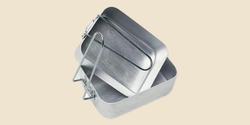 |
||
| M1700 9 Pieces Cooking Set with Burner | Personal Kit | - |  |
||
| M1701 Stainless Steel Coffee Pot | Personal Kit | - | 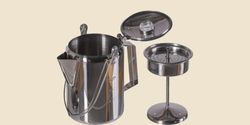 |
||
| Personal Weapons | |||||
| M1686 assault rifle (7.62×67mmB) | Small Arms |  |
|||
| M1690 machine pistol (9x19mm) | Small Arms | 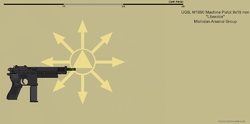 |
|||
| Squad Weapons | |||||
| M1703 Wren MK II general purpose machine gun (7.62x67mmB) | Machine Gun |  |
|||
| Troop Weapons | |||||
| Polybolos 12.7 mm HMG | Machine Gun |  |
|||
| M1700 82 mm Recoilless Rifle | Anti-Tank System | 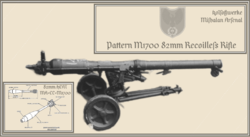 |
|||
| Squadron Weapons | |||||
| M1701 14 mm sniper rifle | Sniper Rifle |  |
|||
| Protective Equipment & Body Armour | |||||
| M1639 Stahlhelm | Steel Helmet | 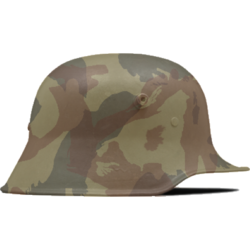 |
|||
| Uniforms | |||||
Artillery
| Name | Origin | Type | № in Service | Image | Notes |
|---|---|---|---|---|---|
| Towed Artillery | |||||
| M1675 60 mm mortar | Mortar | ~5,000 | |||
| M1681 105 mm howitzer | 105mm Howitzer | 1,965 |  |
||
| Self-Propelled Artillery | |||||
| Anti-Aircraft Artillery | |||||
| AAMM | Short-range air defence system | 0 / 56 | 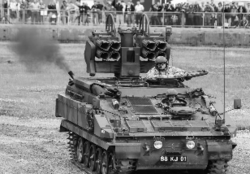 |
| |
| Decommissioned, retired, and scrapped | |||||
| Improvised rocket artillery | Rocket Artillery | 100's | |||
| M1678 82 mm howitzer | Howitzer | ~2,000 | Majority in storage | ||
| M1680 120 mm field gun | Field Gun | 800 | Majority in storage | ||
Land Vehicles
| Name | Origin | Type | № in Service | Image | Notes |
|---|---|---|---|---|---|
| Armoured Combat Vehicles | |||||
| La Bestia Pequeña | Light Tank | 126 | |||
| BK-VIII Light Infantry Scout Vehicle | Armoured Personnel Carrier (Scout) | 22,600 | 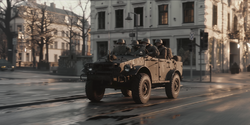 |
Ordered 1722 AN. | |
| Support Vehicles | |||||
| Specialist Vehicles | |||||
Vessels
| Name | Origin | Type | № in Service | Image | Notes |
|---|---|---|---|---|---|
| Surface combatant | |||||
| Submarine | |||||
| Burguesía-class | Coastal submarine | 50 | |||
| Patrol | |||||
| Alcalde-class | Motor gunboat | 240 | |||
| Caudillo-class | Motor launch | 675 | |||
| Coastal Patrol Boat | Fast attack craft | 190 |  |
Received from Constancia as military aid, 1729 AN. | |
| Furia-class | Motor torpedo boat | 230 | |||
| Auxiliary | |||||
| Defensor-class | Landing Ship Tank | 40 | |||
| Ecuador-class | Landing Ship Infantry | 100 | |||
| Guardiana-class | Landing Ship Support | 130 | |||
| Decommissioned | |||||
Aircraft
Aircraft are formed into numbered squadrons of 24 aircraft each, and numbered flights named by type where the numbers are insufficient for a full squadron.
| Name | Origin | Type | № in Service | Image | Notes |
|---|---|---|---|---|---|
| Combat Air | |||||
| F-9 Ashavan II | Multi-role strike aircraft | 80 | 
|
| |
| Intelligence, Surveillance, Target Acquisition and Reconnaissance | |||||
| Reconnaissance balloon | Lighter than air (hydrogen gas) aerostat | 2 | 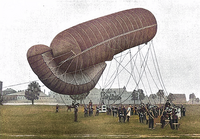 |
Observed deployed to South Moorland in 1725 AN. | |
| Air Mobility | |||||
| Helicopters | |||||
| Training | |||||
| T-4/A-4 Flecha | Turboprop trainer | 90 | 
|
| |
| Decommissioned, retired, scrapped | |||||
Missiles
| Name | Origin | Type | № in Service | Image | Notes |
|---|---|---|---|---|---|
| Air-to-Air | |||||
| Air-to-Ground | |||||
| Ground-to-Air | |||||
| Ground-to-Ground | |||||
| Maritime | |||||
| Short & Medium Range Ballistic | |||||
Ranks and uniforms
Imperial Army ranks
The Imperial Army of Anahuaco follows a strict hierarchy in terms of rank and responsibility, with the most senior officers commanding the largest formations, and the junior enlisted soldiers tasked with carrying out their orders. The following is a list of the various ranks within the Imperial Army, aligned with the RP code for comparative purposes:
- OF-10: General (General de División)
- OF-9: Lieutenant General (General de Brigada)
- OF-8: Major General (Jefe de Estado Mayor)
- OF-7: Brigadier General (Brigadier)
- OF-6: Colonel (Coronel)
- OF-5: Lieutenant Colonel (Teniente Coronel)
- OF-4: Major (Mayor)
- OF-3: Captain (Capitán)
- OF-2: First Lieutenant (Teniente Primero)
- OF-1: Second Lieutenant (Teniente Segundo)
- OR-9: Master Sergeant (Sargento Mayor)
- OR-8: Sergeant First Class (Cabo Primero)
- OR-7: Staff Sergeant (Sargento)
- OR-6: Sergeant (Cabo)
- OR-5: Corporal (Cabo Segundo)
- OR-4: Lance Corporal (Cabo Tercero)
- OR-3: Private First Class (Soldado Primero)
- OR-2: Private (Soldado)
- OR-1: Recruit (Recluta)
Each rank has its own unique responsibilities, privileges, and expectations, and soldiers are expected to perform their duties to the best of their ability, and to maintain the highest standards of military discipline and professionalism at all times.
Imperial Army uniform
The uniform issued to the rank and file of the Imperial Army consists of a cream white tunic, grey trousers, a khaki jacket, and a beret. The color of the beret indicates the soldier's specialty as an infantryman, engineer, artilleryman, or tanker. The uniform is designed to be functional and practical, but may have limitations in harsh environments and combat situations.
In the Imperial Army, the beret is a symbol of each soldier's specialised training and experience. The colours of the berets, assigned based on the soldier's specialty, are as follows:
Infantry: Olive green beret, symbolizing the soldier's strength, agility and determination to engage in close combat with the enemy.
Engineers: Light blue beret, representing the soldier's expertise in constructing and maintaining the army's infrastructure and fortifications.
Artillery: Red beret, showcasing the soldier's mastery of the army's fire support capabilities and the deadly force they bring to bear on the battlefield.
Tankers: Black beret, indicating the soldier's proficiency in operating the army's armored vehicles and their ability to provide decisive firepower to the army's infantry units.
These berets are considered to be an honour to wear and are carefully maintained to ensure that their colours stay true and bright, symbolising the soldier's dedication and pride in their service to the Imperial Army.
The cream white tunic and grey trousers that the Imperial Army issues to its soldiers are symbols of the proud traditions of Anahuacan military service. However, the reality of life in the field can be far from ideal, and the uniforms are often tested to their limits. In the harsh environment of the Green, where soldiers often find themselves fighting in sweltering jungles or sub-zero mountains, the cream white tunic and grey trousers can quickly become soiled and tattered.
The khaki jacket, which is intended to provide some protection from the elements, is often too hot to wear in the scorching sun and too thin to provide adequate warmth in the cold. Furthermore, its standard issue is frequently in short supply, leaving many soldiers without this important piece of equipment.
The beret, with its distinctive colour, is a source of pride for the soldiers who wear it. However, it is also a source of frustration, as the colours, which indicate the soldier's branch of service, can fade or become obscured over time. Furthermore, the berets are often ill-fitting, causing discomfort to the soldiers who wear them.
The Imperial Army has struggled for years to secure enough ammunition boots to equip its soldiers. The situation has become increasingly dire, and despite the best efforts of the Commissariat Corps, the logistical arm of the Imperial Armed Forces, the army has been unable to acquire enough boots to meet its needs.
This shortfall has led to friction between the army and the Commissariat Corps. The army has accused the Commissariat Corps of not doing enough to secure sufficient supplies, while the Commissariat Corps has argued that the army's needs are unrealistic given the limited resources available. The result has been a never-ending cycle of blame, with neither side willing to admit fault or take responsibility for the shortage.
The soldiers themselves have been the ones to suffer the most, with many having to make do with inadequate footwear. This has led to increased rates of injury, reduced mobility, and decreased morale among the rank and file. The shortage of ammunition boots has become a major source of frustration for the Imperial Army, and has put an enormous strain on its ability to fight effectively.
The situation has become so dire that the Imperial Army has been forced to consider other options, such as scouring the battlefields for abandoned boots or even resorting to locally produced footwear of questionable quality. However, these measures have proven to be inadequate and unreliable, and the Imperial Army continues to struggle with this critical shortage.